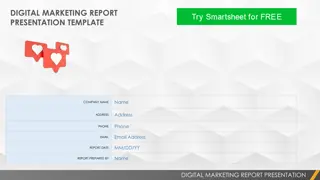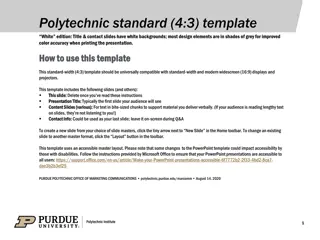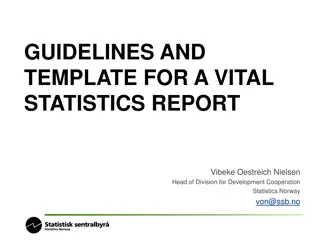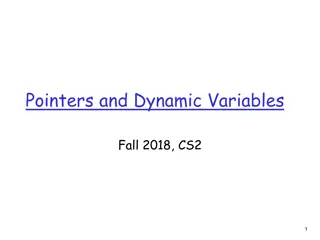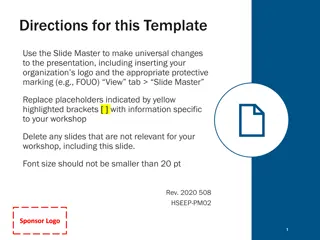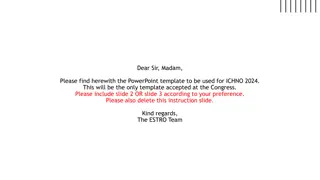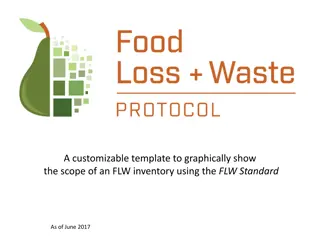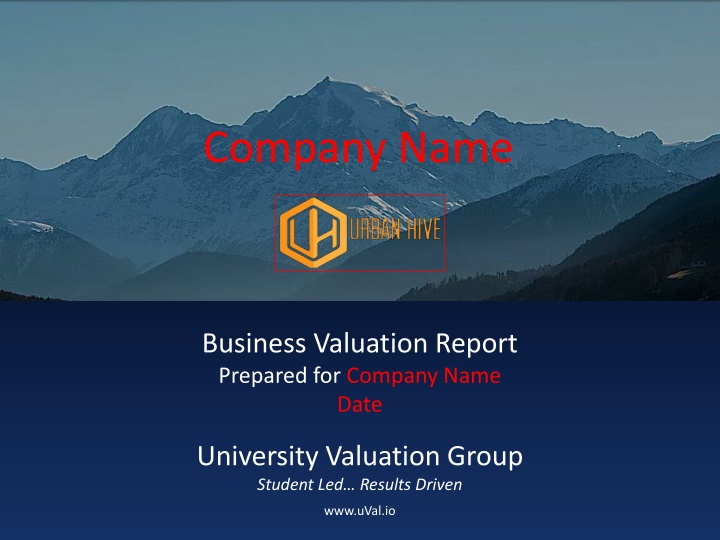
University Valuation Group Report: Blue Plate Diner Acquisition Assessment
"Get a second opinion on the acquisition of Blue Plate Diner with an estimated market value and negotiation insights from University Valuation Group. Discover key insights and valuation considerations to make informed decisions."
Download Presentation

Please find below an Image/Link to download the presentation.
The content on the website is provided AS IS for your information and personal use only. It may not be sold, licensed, or shared on other websites without obtaining consent from the author. If you encounter any issues during the download, it is possible that the publisher has removed the file from their server.
You are allowed to download the files provided on this website for personal or commercial use, subject to the condition that they are used lawfully. All files are the property of their respective owners.
The content on the website is provided AS IS for your information and personal use only. It may not be sold, licensed, or shared on other websites without obtaining consent from the author.
E N D
Presentation Transcript
Company Name Business Valuation Report Prepared for Company Name Date University Valuation Group Student Led Results Driven www.uVal.io
Introduction & Table of Contents Executive Summary Executive Summary 3 The following report is the result of the University Valuation Group s valuation estimation of Company, prepared February 25, 2019 at the request of Person. The University Valuation Group is a student-led valuation consultancy. The report is advisory in nature and intended to provide an estimated market value of the firm. The valuation estimate was conducted by associates of the University Valuation Group s in cooperation with the firm s representatives, and is conditioned upon the accuracy and completeness of information provided through stakeholder interviews, financial reports, revenue and expense forecasts, and market analyses, and the use of established valuation analytics. The resultant valuation is based on the expectation that all relevant facts have been disclosed and are known to potential firm stakeholders. During the preparation of this report certain assumptions are made, as detailed in the report. University Valuation Group has not conducted a site review of the subject firm and its premises, nor have we audited its financial statements. Value Range Value Range 3 Production/Income Approach Production/Income Approach 4 Market Approach Market Approach 9 stakeholders or their Valuation Summary Valuation Summary 12 Valuation Justification Valuation Justification 12 Ownership Structure Cap Table Ownership Structure Cap Table 13 Common Equity Valuation Common Equity Valuation 14 Appendices Appendices 16 Information Sources 1. 2. 3. 4. Interview with Person, Company, about the valuation intent. Research of # comparable companies acquired over the last # months/years from DealStats National economic data related to the ___industry P&L statements as well as tax records and balance sheets for Company 4/9/2025 2 University Valuation Group, www.uval.io
Executive Summary Purpose of Assessment Provide Urban Hive Properties with a second opinion of the acquisition of Blue Plate Diner. This assessment can be useful in comparing the intrinsic value of the restaurant, as determined by University Valuation Group associates, to the owners asking price of $1.75M. Business Overview Blue Plate Diner has been operating with substantial operating profit for well over ten years now thanks to an established customer base. However, revenue growth is declining, and its gross profit margins are becoming small comparable to its revenues. The owner is absent so the restaurant s manager, chef and sous chef are key players in the restaurant s success. Positioning Overview The restaurant operates with similar margins to the upper quartile of its peers. Nominal growth over the last six years is very similar to industry average approximately 1%. To forecast the restaurants revenue projections we take both its positioning, revenue decline, and risk factors into consideration. Valuation Summary We estimate the market value of Blue Plate Diner to be $830,000. We will further discuss our assumptions as to why and show a value range. We also expect the price you will have to pay can be negotiated and the expected spread, if you were to go through with the acquisition, is $600,000. Value Range Football Field $1,300,000 $1,100,000 $900,000 $700,000 $500,000 $300,000 DCF SDE DCF SDE x Comps Sales x Comps Gross x Comps SDE x 4/9/2025 3 University Valuation Group, www.uval.io
Production/Income Valuation Approach A firm s production or income based valuation is the value of the firm s future expected cash flows to its stakeholders, discounted for rate and time. It is the firm s present value and informs its expected market value. This valuation form is dependent on forecasts of the firm s future available cash flows, often referred to as free cash flow or seller s discretionary earnings , and the adoption of a discount rate and expected long-run growth rate. A firm s expected future free cash flows take into account forecasted operating income, potential state and federal liabilities, changes in its current and capital assets and liabilities, and required capital investments. It is the income available for the discretionary use by the firm s stakeholders. The valuation analysis performed for this firm is based on the use of various valuation models and metrics including, but not limited to, those including discounted cash flow and enterprise value multiple models. A firm s production of income based valuation may serve to inform the firm s market value to its stakeholders and may be uniquely different than its book value or an otherwise negotiated value. If this method is not used, explain why in this slide. 4/9/2025 4 University Valuation Group, www.uval.io
Income Approach Discount Rate Converting anticipated future benefits of ownership (cash flow) into value is the core of business valuation. The conversion process involves a stream of expected future benefits into a present value using a discount rate. The rate is the compounded total rate of return assumed necessary to adequately compensate the stakeholders for all of the risks associated with owning the business. This discount rate may be the firm s cost of capital (equity and debt), an investor s required rate of return, or a hurdle rate, the rate of return needed to justify the cost of investment. While it is informed by numerous inputs, it is the opportunity cost of the investor s capital commitment to the firm. The cost of capital analysis was completed using the Cost of Capital Professional study. Returns were selected and calculated for the time period ranging from 1928 to 2020 using an arithmetic mean. Based on experience and professional judgment, the Build- Up Model was selected for the computation of the cost of equity capital. Given the components selected the formula used is as follows: CoE = RFR + ERP + SP + IRP + CSRP = 28.64% = 1.74% + 6.50% + 3.46% + 4.94% + 12.00% A 1.74% Risk Free Rate (RFR) was selected, representing the 10-Year Treasury Constant Maturity Rate A 6.50% Equity Risk Premium (ERP) was selected to reflect such premia in the current equities market. A 3.46% Size Premium (SP) was selected. The Size Premium was based on equity market capitalization size using firms with revenues bracketed above and below the size of the subject firm. The return for the S&P 500 for the same period was 11.81%. An implied 4.94% Industry Risk Premium (IRP) was calculated using an industry beta of 1.76 based on professional judgment. A 12.00% Company Specific Risk Premium (CSRP) was selected based on professional judgment. The estimated cost of equity capital for Acme Garage Door as of 03/22/2021 based on the Build-Up Model is 28.64%. The Weighted Average Cost of Capital (WACC) was also computed given the firm s equity, debt and tax components as follows: WACC = (CoE * We) + (KdPreTax * (1 - t) * Wd) = 22.93% = (28.64% * 70.00%) + (13.00% * (1 - 26.00%) * 30.00%) An equity percentage of 70.00% was selected. A debt percentage of 30.00% was selected. Bank lines and Long-Term debt investment. A borrowing rate (pre-tax cost of debt) of 13.00% was selected. A tax rate of 26.00% was selected. The estimated WACC for Acme Garage Door as of 3/22/2021 is 22.93%. 4/9/2025 5 University Valuation Group, www.uval.io
Income Approach Long-Run Growth Long-Run Growth The long-run growth rate attributed to a firm is a dynamic component of the valuation model used in calculating the firm s value. It is the rate at which the firm s cash flow is expected to grow beyond the period for which the firm s cash flows are expressly forecast. In most cases a firm s long-run growth rate will be similar to the expected rate of economic growth for a given economy or market. Long-Run Growth Rate Present details of the calculation and/or effect of the firm s expected long-run growth rate Short-Run Growth The short-run growth rate attributed to a firm is an integral element of the valuation model used in calculating the firm s value. It is the rate at which the firm s cash flow is expected to grow for the period of the firm s explicit cash flow forecasts. Short-Run Growth Rate Present details of the calculation and/or effect of the firm s expected short-run growth rate Include a discussion of the selected long-run growth rate for this firm and how it was calculated. 4/9/2025 6 University Valuation Group, www.uval.io
Income Measurements & Forecasts The following table shows historic values for revenue, gross profit, and seller's discretionary earnings (SDE), as well as a three-year forecast for each. SDE is used as a proxy for free cash flow in our valuation metrics and is calculated by adding depreciation and owner's compensation to net operating income, and represents the cash flow the owner of a restaurant can expect under the assumption he or she is the sole owner with rights to all distributions. The seller s discretionary earnings measurement is widely used to value restaurants of this size. 2019 1.79% 2020 1.71% 2021 1.17% Revenue Forecast growth 2019 66.84% 2020 66.55% 2021 66.55% Gross Profit % of COGS When looking at revenue since 2011, early on the restaurant was outpacing its industry in revenue growth with a year over year growth of around 4%, but has since been growing at a declining rate and for the last three years its growth has been underperforming the industry with an average growth of 0.5%. We forecasted this trend into each year of the explicit period by applying a past six year rolling average of yearly growth. Similarly, a six-year rolling average of COGS% to revenue was calculated to forecast gross profit. 2019 $272,373 2020 $324,210 2021 $358.280 SDE in $ 3 Year Historical Income measurements & 3 Year Forecasts 2000000 Sales Revenue Gross Profit Seller's Discretioanry 1800000 1600000 1400000 1200000 1000000 800000 600000 400000 200000 0 Year 2016 2017 2018 2019 2020 2021 4/9/2025 7 University Valuation Group, www.uval.io
Income Approach DCF Model Numbers in thousands $ SDE g (1%) PVDCF(SDE) To estimate an intrinsic value based on the restaurant's future returns, we have used an income approach where the SDE is our cash flow measurement. To calculate PV of SDE we use a DCF model where the future returns are discounted back to the base year (last reported financials). SDE x (2.6x) PVDCF(SDE) PVFCF SDE PVDCF SDE Year 278.40 278.40 2018 272.37 201.80 201.75 272.37 201.76 201.76 2019 324.21 177.90 379.65 324.21 177.89 379.65 2020 We used a discount rate of 35% as we found this to be an average expected IRR for Incorporated is the risks associated with operating a restaurant, economic factors, supply chain factors, and uncertainty about management and customer retention. 358.28 145.60 525.27 358.28 145.62 525.27 restaurant acquisitions. 2021 PVDCF(SDE) PVDCF(SDE) 525.27 525.27 953.55 931.52 CVSDE CVx The growth rates applied is a continuous growth rate for the DCF SDE g model of 1%, based on the weighted average of the company average for the last three years of 0.5% and a forecasted industry growth rate of 1.4% for the next decade. 387.56 378.61 PVCV(SDE) PVCV(x) 912.83 903.88 VALUEDCF SDE g VALUEDCF SDE x DCF Value Range For the DCF SDE x we used a harvest/terminal multiple of 2.6x SDE. The multiple is based on the comparable transactions, further discussed on the following pages. $1,300,000 $1,100,000 The value ranges we found for this approach is shown on the bottom right corner and represents the values of the two DCF models utilizing a range for the discount rates between 30% and 40%, a range for the continuous growth rate of .5 to 1.5%, and a range for the terminal multiple of 2.2x to 3x. $900,000 $700,000 $500,000 DCF SDE DCF SDE x 4/9/2025 8 University Valuation Group, www.uval.io
Market Valuation Approach A market based valuation includes the value of the firm s capital assets as reflected by recent transactions in the open, or public, capital markets. It includes market values of the firm s equity (common and preferred) and long-term capital debt (bonds, notes, bills, and other marketable and non-marketable debt instruments). As with other estimated valuation forms, this value is the firm s Enterprise Value and represents the market value of the firm s common and preferred stock, and long-term debt less the value of its cash and cash equivalents. A firm s market based valuation is often informed through a comparison of the firm s value with the established market value of other, similar firms in the public and private equity and debt markets. This form of a valuation estimate most often utilizes one or more enterprise value multiples established by dividing the recent market or transactional value of comparable firms by a cash flow variable such as EBIT, EBITDA, Free Cash Flow, Seller s Discretionary Earnings, and/or Net Income. The premise being that the market value of the firm subject to this valuation analysis may reasonably be established by interacting the enterprise value multiple of comparable firms in the market with the subject firm s appropriate cash flow variable. For example, if recent market transactions of comparable firms results in a EV/EBITDA multiple of 7, the value of the subject firm may be estimated as 7 times the subject firm s estimated EBITDA. If this method is not used, explain why in this slide. 4/9/2025 9 University Valuation Group, www.uval.io
Market Approach Comparable Companies Comparable Sales Gross Gross% SDE SDE% Price Sales x Gross x SDE x American Style Restaurant $2,000,000 $1,390,000 70% $400,000 20% 0.48 0.68 2.50 $950,000 Full Service Restaurant $1,939,805 $1,199,543 62% $365,000 19% 0.36 0.58 1.92 $700,000 Private Restaurant (Italian) $1,615,729 $520,366 32% $252,923 16% 0.32 1.00 2.05 $518,000 American Style Restaurant $1,542,458 $1,051,297 68% $258,441 17% 0.37 0.55 2.22 $575,000 Restaurant $1,473,431 $1,115,563 76% $374,458 25% 0.81 1.08 3.20 $1,200,000 Private Restaurant (Latin) $1,404,353 $770,583 55% $344,000 33% 0.49 0.89 2.00 $688,000 Italian Restaurant $1,379,322 $969,048 70% $306,958 22% 0.18 0.26 0.81 $250,000 Diner $1,359,000 $706,863 52% $148,337 11% 0.29 0.56 2.66 $394,000 Private Restaurant Acquisition target: Blue Plate Diner (BPD) $1,315,385 $903,538 69% $277,054 21% 0.53 0.77 2.53 $700,000 0 $1,600,000 $610,841 38% $354,015 22% Lower Quartile 0.25% $1,369,161 $738,723 54% $255,682 16% $456,000 0.31 0.55 1.96 Median 0.50% $1,473,431 $903,538 62% $306,958 21% $688,000 0.37 0.68 2.14 Upper Quartile 0.75% $1,607,865 $1,083,430 70% $359,507 24% $825,000 0.52 0.97 2.63 The following data is representative of the 9 most comparable companies to BPD from a data pull of 50 company transactions. The transactions data was screened for companies in the full-service restaurant industry, bought over the last 24 months, with revenues between $1.2 and $2 million. Blue Plate Diner has greater similarities to the upper quartile of the sample, and by further analysis of the sample shown in the graphs on the next page, we can find the most applicable market multiples for a market approach valuation. 4/9/2025 10 University Valuation Group, www.uval.io
Market Approach Analysis 100% The dataset of 50 comparable transactions is shown in the graphs on the right side, and illustrates the profit margins for SDE and Gross Profit compared to the SDE sales multiple and the Gross Profit sales multiple, both on a logarithmic scale to better understand the samples concentration. The straight blue line represents BPD s profit margins and gives us a better understanding of where in the sample it should be positioned. - 0.20 0.40 0.60 0.80 1.00 1.20 1.40 1.60 50% 25% 13% Gross% to Gross x Log 100% - 1.00 2.00 3.00 4.00 5.00 6.00 7.00 8.00 From this interpretation and the previous information provided, BDP seems to correlate more with companies with similar margin ratios and transaction multiples of somewhere between 0.80x and 1.20x for Gross Profit multiples, and somewhere between 2.00x and 3.00x for SDE multiples. 22% 5% 1% SDE% to SDE x Log To calculate a market value for BDP we used the range of valuation multiples found by creating a ratio of the firm s value and the target cash flow input, such as Sales (x), Gross profit (x), and SDE (x), and multiplied it by the relating income measurements for the base year with a deviation to include errors. The multiples represent the multiple of the income measurement the comparable companies has been bought for the last 24 months. Following is the ranges for our three market approach models on the right. SDE x $ 238,401.91 $ 278,401.91 $ 318,401.91 2.20 $ 524,484.20 $ 612,484.20 $ 700,484.20 2.60 $ 619,844.97 $ 723,844.96 $ 827,844.96 3.00 $ 715,205.73 $ 835,205.72 $ 955,205.72 Sales x $ 1,575,358.00 $ 1,675,358.00 $ 1,775,358.00 0.41 $ 645,896.78 $ 686,896.78 $ 727,896.78 0.51 $ 803,432.58 $ 854,432.58 $ 905,432.58 0.61 $ 960,968.38 $ 1,021,968.38 $ 1,082,968.38 Gross x $ 591,905.00 $ 641,905.00 $ 691,905.00 0.80 $ 473,524.00 $ 513,524.00 $ 553,524.00 1.00 $ 591,905.00 $ 641,905.00 $ 691,905.00 1.20 $ 710,286.00 $ 770,286.00 $ 830,286.00 We have put our hat on the middle value for the SDE and Sales models as they are based on the higher quartile multiples, however for the Gross model we chose to put our hat on the higher multiple of 1.20x based on the trends of higher multiples for lower gross profit ratios in the graph above. 11 4/9/2025 11 University Valuation Group, www.uval.io
Valuation Summary We have now discussed both the approaches we did to estimating an intrinsic value for Blue Plate Diner. We used an income approach and a market approach and used five models combined. As shown in the value range visual on page 3, the different models are all coming in as similar ranges of values. However, we have taken certain assumptions for each of the models, and some ought to be weighted more than others. On the right is the following weightings leading up to our weighted average estimated value for Blue Plate Diner. Model Middle Value Weighting DCF SDE g $ 912,486.51 20.00% DCF SDE x $ 903,330.11 20.00% Sales x $ 854,432.45 20.00% Gross x $ 770,301.51 20.00% We are confident that the value range for these models is a good estimate of the intrinsic value for Blue Plate Diner, and it would be uncommon for the market value to deviate much from the range stated. Based on our weightings of the five models we came up with the value of $830,000. This is taking into consideration what has been paid for similar restaurants in the market, and it takes into consideration the value of the future cash flows the restaurant can produce for the owner. SDE x $ 730,314.97 20.00% Intrinsic Value $ 833,232.89 100.00% The reason for this weighting: Sales x, Gross x, SDE x, DCF SDE x, and DCF SDE g are all weighted the same as we find them equally important. They all show important aspects with growth and risk incorporated into the values, and they confirm what the market is willing to pay for a similar investment. Keep in mind that this is valuing the restaurant as is, and may be thought of as the expected market value in the event the firm were to change hands between a willing buyer and a willing seller, neither being under a compulsion to conclude the transaction and both having full knowledge of all the relevant facts. 4/9/2025 12 University Valuation Group, www.uval.io
Valuation Justification The stated value from the previous page does not take into consideration the potential premiums applicable to this restaurants market value. There has be some value to the fact that the restaurant has been operating for well over 10 years with consistent historical profits and a seemingly loyal customer base. Additionally, some other factors that was not accounted for in the comparable transactions was the absentee ownership and the fact that the management team is expected to continue working at Blue Plate Diner, as well as the benefit of owning the property the restaurant is on. Hence, we assumed a 15% premium to the weighted average value, as the models derived from a market multiple does not fully express this. The remaining spread is the premium for the lack of sellers motivation. The current owner is very comfortable with his current income stream and other benefits, as we found several personal expenses and compensations. However, based on the comparable transactions and some statistics we found from bizbuysell.com, on average the transactions go through at 85%-90% of sellers asking price, and we believe the seller already has a satisfying enough premium to be willing to sell at $1,575,000 through some negotiation. In this case the seller already has a great premium over most other sellers we have looked at based on the fact that he don t want to sell, whilst others has a certain motivation to sell (retirement, cash constrains new ventures). So, be aware the spread you might have to pay as a premium (600k), is basically a sunk cost in this case. That is substantial considering the risk associated with selling this restaurant off later on, and our value range here is contingent on the new restaurant being able to replicate the original. $1,950,000 $1,750,000 - - Ask price 90% of Ask Price $1,550,000 $1,350,000 - Spread of $600,000 $1,150,000 $950,000 - - Premium of 15% Intrinsic value $750,000 $550,000 $350,000 DCF SDE DCF SDE x Comps Sales x Comps Gross x Comps SDE x 4/9/2025 13 University Valuation Group, www.uval.io
Ownership Structure Cap Table Common Equity Shares Shareholder Share Class Investment Shares Ownership Complete this section with a representation of the firm s ownership structure (Cap Table). Recall that the Common Equity Shares should include in the money and exercisable OPTIONS and WARRANTS Preferred Equity Shares Shareholder Dividend % Investment Shares Conversion/Call Feature Long-Term Debt Debtholder Debt Type Investment Interest Rate Conversion/ Call Feature 4/9/2025 14 University Valuation Group, www.uval.io
Common Equity Valuation Determining the value a firm s common equity shares (common stock) may be a relatively complex matter and includes the consideration of a variety of issues, including the assignment of share class, voting rights, conversion privileges, etc.. In the event the subject firm has one class of common share equity with uniform voting rights, liquidation, and conversion privileges, the assignment of value to that class of equity shares may be available through the Enterprise Value formulation. A firm s Enterprise Value is synonymous with its market value, or estimated value an d is expressed through the following equation: ?? = ????? ?? ?????? ?????? + ????? ?? ????????? ?????? + ????? ?? ???? ???? ???? ???? & ??????????? Taking the value of preferred equity, long-term debt, cash and cash equivalents from the subject firm s balance sheet and using the firm s estimated value as its market value, we can rearrange the equation to solve for the market value of the firm s common equity: ????? ?? ?????? ?????? = ?? ????? ?? ????????? ?????? ????? ?? ???? ???? ???? + ???? & ??????????? Complete this section with a calculation of the market value of the firm s common equity, if possible, on both an aggregate and per share basis. 4/9/2025 15 University Valuation Group, www.uval.io
Valuation Certification We certify that, to the best of our knowledge and belief, the statements of this report are accurate and complete. The valuation analyses and conclusions, though limited by the financial data provided University Valuation Group and reported assumptions, represent our unbiased professional assessment of the current market value of the subject firm. We have no present or prospective interest in the firm for which this report is prepared, and have no personal interest with respect to the parties involved. Our engagement in this valuation assignment was not contingent upon developing or reporting predetermined results. We have neither received nor sought compensation for completing this assignment, and our completion of the analysis and report are not contingent upon the development or reporting of a predetermined value, or direction in value, favoring the cause of the client, or the occurrence of a subsequent event directly related to the intended use of this valuation. Though our analyses and conclusions were developed in conformity with the Uniform Standards of Professional Appraisal Practice, the undersigned Managing Director and Associates of University Valuation Group hold no specific professional valuation certifications or credentials. Respectfully, Cole Flinders, Associate Richard Haskell, PhD, Managing Director Oskar R. Voello, Senior Associate Tevita Langi, Associate Associate Professor of Finance, Westminster College Senior BS Finance & Economics, Westminster College MBA, Westminster College Senior BS Finance, Westminster College April 9, 2019 1Richard Haskell, PhD, Oskar R. Voello, Cole Flinders, or Tevita Langi are licensed appraisers or certified/accredited business valuators 4/9/2025 16 University Valuation Group, www.uval.io
Appendices Important Notice, Disclaimer & Limitations Agreement for Services, Non- Disclosure & Confidentiality Agreement Key Terms Supporting Financial Reports & Documents Guideline Comparable Transactions Additional Supporting Documents 4/9/2025 17 University Valuation Group, www.uval.io
Agreement for Services, Non-Disclosure and Confidentiality Agreement Insert PDF of the document, including signatures, file associates and clients signed. 4/9/2025 18 University Valuation Group, www.uval.io
Important Notice, Disclaimer & Limitations Important Notice and Disclaimer This Business Valuation Report was prepared using information provided by owners, managers, and/or representatives (herein referred to representative) of the business or firm under review (herein referred to as the firm). University Valuation Group (herein referred to as uVal) assumes no responsibility and makes no representation as to the reliability, the accuracy or the completeness of the information contained in this report. This Business Valuation Report is not in any way a guarantee of the firm s value, and it is not intended to be used in any legal proceeding, nor is it to be relied upon in any way as the sole source of determining the value of any company or other organization. It is focused on the firm and its assigns in identifying the firm s potential market value, and is not a formal or certified valuation or appraisal. Numerous factors and conditions can affect the market value for which a firm ultimately sells, and every business owner must evaluate this report in the light of their own business and industry experience, consider the input of any expert valuation counsel they may retain, and adjust their strategy accordingly. Sale of Business Assets or Stock Requires Qualified Legal and Accounting Advice The sale of business assets or stock in a corporation is complex. The sale of stock in a corporation may require significantly more analysis than an asset based sale since the buyer is assuming all of the current, future and historical liabilities of the corporation. Also, the tax treatment of a business asset sale is significantly different from the tax treatment of a stock sale. The tax laws may be very complex. If planning a sale of business assets or of stock, consult with an attorney and tax advisor. A qualified professional based on each individual case must give such tax and legal advice. uVal offers no such advice and strongly recommends seeking advice of qualified tax and legal counsel with regard to any sell on either a stock or asset basis. Limitations The firm s representatives have provided current and forecasted financial, market, and capitalization data used in the preparation of this report, and as such, the report s completeness and accuracy are only as reliable as the provided data, forecasts, and qualitative information. uVal assumes no responsibility for any actions, or omissions, of the representative or by anyone to whom they may provide this report. uVal has no obligation to review or confirm the veracity, accuracy or completeness of any of the financial or qualitative information on which this report is based or that is contained in this report, as no obligation, and is not required, to give testimony in any court of law or other governmental or legal proceeding with referent to any matters herein. 4/9/2025 19 University Valuation Group, www.uval.io
Key Terms For a comprehensive listing of key terms please go to International Glossary of Business Valuation Terms Business Valuation - the act or process of determining the value of a business enterprise or ownership interest therein. Capitalization - a conversion of a single period of economic benefits into value. Capitalization Rate - any divisor (usually expressed as a percentage) used to convert anticipated economic benefits of a single period into value. Capital Structure - the composition of the invested capital of a business enterprise, the mix of debt and equity financing. Cash Flow - cash that is generated over a period of time by an asset, group of assets, or business enterprise. It may be used in a general sense to encompass various levels of specifically defined cash flows. When the term is used, it should be supplemented by a qualifier (for example, "discretionary" or "operating") and a specific definition in the given valuation context. Control - the power to direct the management and policies of a business enterprise. Control Premium - an amount or a percentage by which the pro rata value of a controlling interest exceeds the pro rata value of a non-controlling interest in a business enterprise, to reflect the power of control. Cost of Capital - the expected rate of return that the market requires in order to attract funds to a particular investment. Discount for Lack of Control - an amount or percentage deducted from the pro rata share of value of 100% of an equity interest in a business to reflect the absence of some or all of the powers of control. Discount for Lack of Marketability - an amount or percentage deducted from the value of an ownership interest to reflect the relative absence of marketability. Discount for Lack of Voting Rights an amount or percentage deducted from the per share value of a minority interest voting share to reflect the absence of voting rights. Discount Rate - a rate of return used to convert a future monetary sum into present value. Discounted Cash Flow Method a method within the income approach whereby the present value of future expected net cash flows is calculated using a discount rate. Equity the owner s interest in property after deduction of all liabilities. If the subject valuation introduces finance terms not included in this listing, those terms should be inserted into this alphabetical list 4/9/2025 20 University Valuation Group, www.uval.io
Key Terms - continued Equity the owner s interest in property after deduction of all liabilities. Equity Risk Premium - a rate of return added to a risk-free rate to reflect the additional risk of equity instruments over risk free instruments (a component of the cost of equity capital or equity discount rate). Fair Market Value - the price, expressed in terms of cash equivalents, at which property would change hands between a hypothetical willing and able buyer and a hypothetical willing and able seller, acting at arms length in an open and unrestricted market, when neither is under compulsion to buy or sell and when both have reasonable knowledge of the relevant facts. Financial Risk the degree of uncertainty of realizing expected future returns of the business resulting from financial leverage. Free Cash Flow The firm s available cash flows to stakeholders Goodwill - that intangible asset arising as a result of name, reputation, customer loyalty, location, products, and similar factors not separately identified. Goodwill Value - the value attributable to goodwill. Guideline Public Company Method a method within the market approach whereby market multiples are derived from market prices of stocks of companies that are engaged in the same or similar lines of business, and that are actively traded on a free and open market. Income (Income-Based) Approach - a general way of determining a value indication of a business, business ownership interest, security, or intangible asset using one or more methods that convert anticipated economic benefits into a present single amount. Internal Rate of Return a discount rate at which the present value of the future cash flows of the investment equals the cost of the investment. Invested Capital - the sum of equity and debt in a business enterprise. Debt is typically a) all interest bearing debt or b) long-term interest-bearing debt. When the term is used, it should be supplemented by a specific definition in the given valuation context. Investment Risk - the degree of uncertainty as to the realization of expected returns. Investment Value - the value to a particular investor based on individual investment requirements and expectations. Liquidity - the ability to quickly convert property to cash or pay a liability. 4/9/2025 21 University Valuation Group, www.uval.io
Key Terms - continued Liquidation Value - the net amount that would be realized if the business is terminated and the assets are sold piecemeal. Liquidation can be either "orderly" or "forced." Majority Control - the degree of control provided by a majority position. Majority Interest - an ownership interest greater than 50% of the voting interest in a business enterprise. Market (Market-Based) Approach - a general way of determining a value indication of a business, business ownership interest, security, or intangible asset by using one or more methods that compare the subject to similar businesses, business ownership interests, securities, or intangible assets that have been sold. Market Multiple the market value of a company's stock or invested capital divided by a company measure (such as economic benefits, number of customers). Marketability - the ability to quickly convert property to cash at minimal cost. Marketability Discount - see Discount for Lack of Marketability. Merger and Acquisition Method a method within the market approach whereby pricing multiples are derived from transactions of significant interests in companies engaged in the same or similar lines of business. Minority Discount - a discount for lack of control applicable to a minority interest. Minority Interest - an ownership interest less than 50% of the voting interest in a business enterprise. Multiple - the inverse of the capitalization rate. Net Present Value the value, as of a specified date, of future cash inflows less all cash outflows (including the cost of investment) calculated using an appropriate discount rate. Non-Operating Assets - assets not necessary to ongoing operations of the business enterprise. Normalized Earnings economic benefits adjusted for nonrecurring, noneconomic, or other unusual items to eliminate anomalies and/or facilitate comparisons. Present Value the value, as of a specified date, of future economic benefits and/or proceeds from sale, calculated using an appropriate discount rate. 4/9/2025 22 University Valuation Group, www.uval.io
Key Terms - continued Price/Earnings Multiple the price of a share of stock divided by its earnings per share. Rate of Return an amount of income (loss) and/or change in value realized or anticipated on an investment, expressed as a percentage of that investment. Report Date the date conclusions are transmitted to the client. Required Rate of Return the minimum rate of return acceptable by investors before they will commit money to an investment at a given level of risk. Return on Equity the amount, expressed as a percentage, earned on a company s common equity for a given period. Return on Investment see Return on Invested Capital and Return on Equity. Return on Invested Capital the amount, expressed as a percentage, earned on a company s total capital for a given period. Tangible Assets physical assets (such as cash, accounts receivable, inventory, property, plant and equipment, etc.). Transaction Method - see Merger and Acquisition Method. Unsystematic Risk the risk specific to an individual security that can be avoided through diversification. Valuation the act or process of determining the value of a business, business ownership interest, security, or intangible asset. Valuation Approach a general way of determining a value indication of a business, business ownership interest, security, or intangible asset using one or more valuation methods. Valuation Date the specific point in time as of which the valuator's opinion of value applies (also referred to as "Effective Date" or "Appraisal Date"). Valuation Method within approaches, a specific way to determine value. Weighted Average Cost of Capital (WACC) the cost of capital (discount rate) determined by the weighted average, at market value, of the cost of all financing sources in the business enterprise's capital structure. For a comprehensive listing of key terms please go to International Glossary of Business Valuation Terms 4/9/2025 23 University Valuation Group, www.uval.io
Supporting Financial Reports & Documents 1. Financials 2. Forecasts 3. Tax returns (only needs to include schedules that outline income statement and support balance sheet) 4. Other 4/9/2025 24 University Valuation Group, www.uval.io
Guideline Comparable Transactions Include complete listing of comparable guideline transactions in this section, regardless whether you used them all or not in the report. 4/9/2025 25 University Valuation Group, www.uval.io
Additional Supporting Documents Include other important calculations, descriptions, or supporting materials in this section 4/9/2025 26 University Valuation Group, www.uval.io


